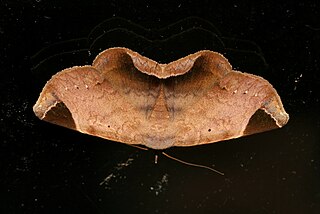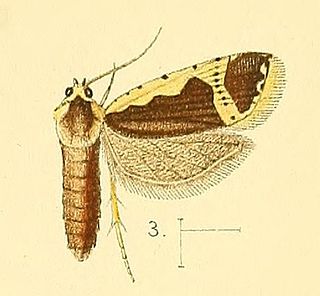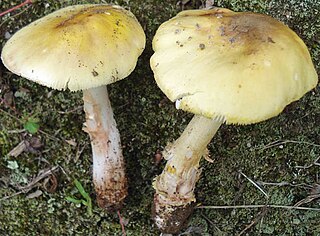Related Research Articles

The double-striped pug is a moth of the family Geometridae. It is a widespread and common species, being found throughout the Palearctic region, including the Near East and North Africa.

The shoulder-striped wainscot is a moth of the family Noctuidae. The species was first described by Carl Linnaeus in 1761. Some authors place it in the genus Mythimna. It is found throughout Europe and in Russia to the west of the Urals.

Apamea monoglypha, the dark arches, is a moth of the family Noctuidae. The species was first described by Johann Siegfried Hufnagel in 1766. It is a common, sometimes abundant, European species. It is found in most of Europe except northernmost Fennoscandia and the southern parts of the Iberian Peninsula and Greece. The species is also found in Anatolia, Turkestan, Western Asia and Central Asia, Siberia and Mongolia. In the Alps it is found up to heights of 2,500 meters. The smaller subspecies sardoa is found on Sardinia and Corsica.

Apamea crenata, known as the clouded-bordered brindle, is a moth in the family Noctuidae. It is distributed throughout the Palearctic realm. In the North it crosses the Arctic Circle, in the Mediterranean it is found only in cool locations and mountains avoiding very hot areas. In the Alps, it rises to an altitude of about 2000 metres.

Daphnis nerii, the oleander hawk-moth or army green moth, is a moth of the family Sphingidae. It was described by Carl Linnaeus in his 1758 10th edition of Systema Naturae.

Smerinthus ocellatus, the eyed hawk-moth, is a European moth of the family Sphingidae. The species was first described by Carl Linnaeus in his 1758 10th edition of Systema Naturae.

Hyles gallii, the bedstraw hawk-moth or galium sphinx, is a moth of the family Sphingidae. The species was first described by S. A. von Rottemburg in 1775.

Diacrisia sannio, the clouded buff, is a moth of the family Erebidae. The species was first described by Carl Linnaeus in his 1758 10th edition of Systema Naturae. It is found in the Palearctic realm from Ireland to Siberia. It is not found in North Africa. In the Russian Far East, eastern China, Korea, and Japan it is replaced by Diacrisia irene.

Psimada is a monotypic moth genus of the family Noctuidae. Its only species, Psimada quadripennis, is found in the Indian subregion, southern China, Taiwan, Myanmar, Thailand, Sri Lanka, the Andaman Islands, Sundaland, Sulawesi and Seram. Both the genus and species were first described by Francis Walker in 1858.

Mesapamea secalis, the common rustic, is a moth of the family Noctuidae. The species was first described by Carl Linnaeus in his 1758 10th edition of Systema Naturae. It is found in Europe, north-west Africa, Turkey and northern Iran.

Apamea scolopacina, the slender brindle, is a moth of the family Noctuidae. The species was first described by Eugenius Johann Christoph Esper in 1788. It is found across the Palearctic realm from central Europe to the Kuril Islands northeast of Japan.
Arbelodes prochesi is a moth in the family Cossidae. It is found in south-central Zambia and on the Eastern Highlands of Zimbabwe, possibly extending into Mozambique. The habitat consists of legume-dominated woodland.

Spinitibia is a genus of moths in the family Autostichidae. It contains only one species, Spinitibia hodgesi, which is found in North America, where it has been recorded from Alabama, Arkansas, Florida, Georgia, Indiana, Kansas, Louisiana, Mississippi, Oklahoma, South Carolina, Tennessee and Virginia.

Panegyra flavicostana is a species of moth of the family Tortricidae. It is found in Cameroon, Nigeria and Gambia.
Scrobipalpa hyoscyamella is a moth in the family Gelechiidae. It was described by Henry Tibbats Stainton in 1869. It is found in Portugal, Spain, southern France, Austria and Romania.
Hypercallia phlebodes is a moth in the family Depressariidae. It was described by Lord Walsingham in 1912. It is found in Guatemala.

Udea albostriata is a moth in the family Crambidae. It was first described by Zhang and Li in 2016. It is found in Hebei, China.
Stenoma symmicta is a moth in the family Depressariidae. It was described by Lord Walsingham in 1913. It is found in Panama and Guyana.

Amanita flavorubens, also known as the yellow American blusher or the yellow American blushing amanita, is a species of the genus Amanita.

Ichneutica ceraunias is a moth of the family Noctuidae. It is endemic to New Zealand. This species is found from the central North Island to the bottom of the South Island. Hosts of the larvae are species of Chionochloa and Festuca. This colourful moth is variable in appearance and can be mistaken for Ichneutica dione. Adults are on the wing from October to February.